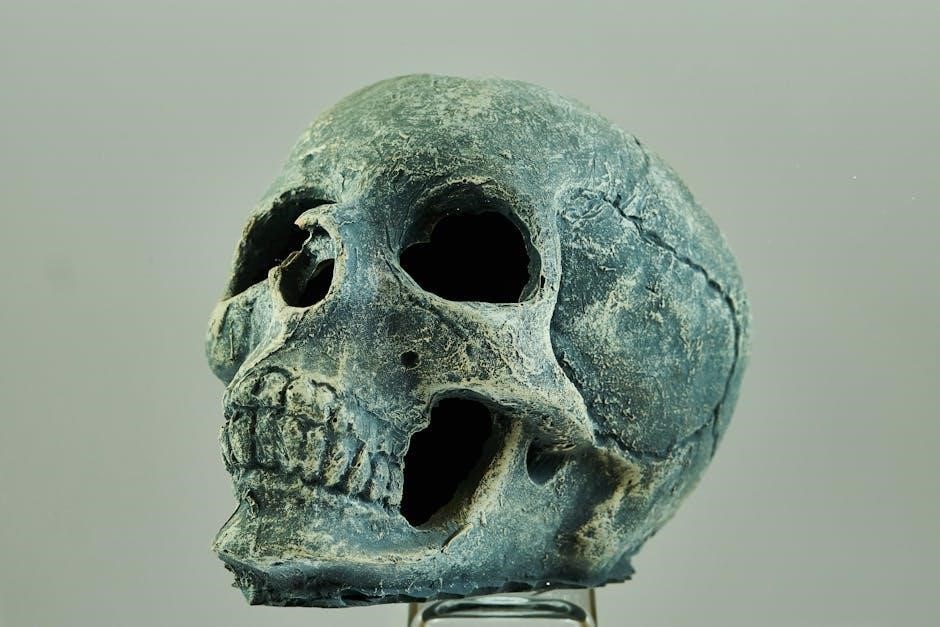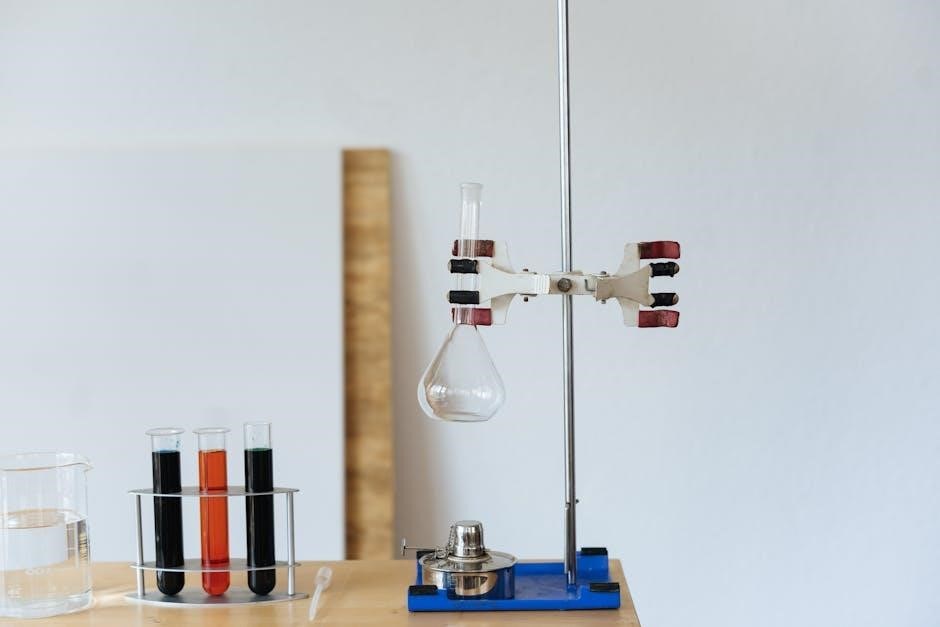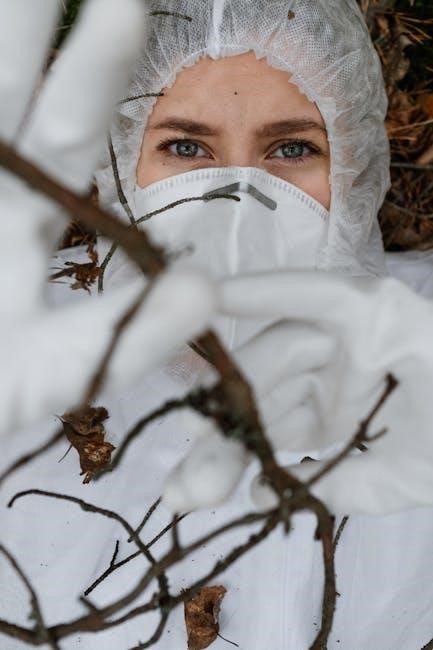Forensic Science Fundamentals and Investigations: Article Plan
This article will explore the fascinating world of forensic science. We will cover the fundamental principles and various investigative techniques. Each section offers a deep dive into key topics, including evidence analysis and more.
Forensic science is a multidisciplinary field that applies scientific principles and techniques to matters of law. It encompasses a wide range of disciplines, including biology, chemistry, physics, and computer science, to analyze evidence and provide expert testimony in legal proceedings. The primary goal of forensic science is to assist in the investigation and adjudication of criminal and civil cases by providing objective and reliable scientific evidence.
The history of forensic science dates back centuries, with early examples including fingerprint analysis and toxicology. However, the field has evolved significantly in recent years, driven by advancements in technology and a growing understanding of scientific principles. Today, forensic science plays a crucial role in the criminal justice system, helping to solve crimes, exonerate the innocent, and ensure that justice is served.
One of the key aspects of forensic science is the application of the scientific method to the analysis of evidence. This involves collecting, preserving, and analyzing evidence using validated scientific techniques. Forensic scientists must adhere to strict protocols and quality control measures to ensure the accuracy and reliability of their findings. They must also be able to communicate their findings clearly and effectively to law enforcement, attorneys, and juries.
Forensic science is not without its challenges. One of the main challenges is the potential for bias and error. Forensic scientists must be aware of their own biases and take steps to mitigate them. They must also be vigilant in identifying and correcting errors in their analysis. Additionally, forensic science is constantly evolving, and forensic scientists must stay up-to-date on the latest advancements in the field.
Despite these challenges, forensic science remains a vital tool in the pursuit of justice. By providing objective and reliable scientific evidence, forensic science helps to ensure that the guilty are brought to justice and the innocent are protected.
Crime Scene Investigation and Evidence Collection
The crime scene is the starting point for any forensic investigation. It is the location where a crime occurred and where evidence related to the crime may be found. Crime scene investigation is a systematic process that involves securing the scene, documenting the scene, searching for evidence, collecting evidence, and preserving evidence.
The first step in crime scene investigation is to secure the scene. This involves establishing a perimeter around the scene to prevent unauthorized access. The perimeter should be large enough to encompass the entire area where evidence may be found. Once the scene is secured, the next step is to document the scene. This involves taking photographs and videos of the scene, as well as creating sketches and diagrams of the scene.
After the scene has been documented, the next step is to search for evidence. This involves systematically searching the scene for any items that may be related to the crime. Evidence can include anything from fingerprints and DNA to weapons and clothing. Once evidence is found, it must be collected and preserved. This involves carefully packaging the evidence and labeling it with the date, time, and location where it was found.
Proper evidence collection is crucial to maintaining the integrity of the evidence. Evidence must be collected in a way that prevents contamination and degradation. For example, DNA evidence should be collected using sterile swabs and packaged in airtight containers. Evidence should also be stored in a secure location to prevent tampering.
The chain of custody is a record of who has had possession of the evidence from the time it was collected until it is presented in court. The chain of custody must be maintained to ensure that the evidence is admissible in court. Any break in the chain of custody can raise questions about the authenticity of the evidence.
Crime scene investigation and evidence collection are critical components of forensic science. Proper crime scene investigation and evidence collection can help to solve crimes and bring criminals to justice.
Hair Analysis in Forensic Investigations
Hair analysis plays a crucial role in forensic investigations. As a form of trace evidence, hair can provide valuable insights into a crime, linking a suspect to a crime scene or identifying a victim. The examination of hair involves both macroscopic and microscopic analysis, allowing forensic scientists to determine various characteristics, such as color, shape, and structure.
The history of hair analysis dates back to the late 19th century, and it has evolved significantly with advancements in technology. Today, forensic hair analysis is a well-established field with standardized procedures and protocols. One of the primary functions of hair is to regulate body temperature and protect against environmental factors. Understanding the structure of human hair is essential for forensic analysis. Hair consists of three main layers: the cuticle, cortex, and medulla.
The cuticle is the outermost layer, composed of overlapping scales that protect the inner layers. The cortex is the thickest layer, containing pigment granules that determine hair color. The medulla is the central core of the hair, which can vary in thickness and pattern. Variations in these structures can provide clues about the origin and characteristics of the hair.
Microscopic examination is a key component of hair analysis. Forensic scientists use microscopes to observe the details of hair structure, such as the scale patterns of the cuticle, the distribution of pigment in the cortex, and the pattern of the medulla. These characteristics can be compared to known samples to determine if a hair sample is consistent with a particular individual.
While hair analysis can provide valuable information, it’s important to note that it has limitations. Hair analysis alone cannot definitively identify a person, as hair characteristics can be shared by multiple individuals. However, when combined with other forensic evidence, such as DNA analysis, hair analysis can be a powerful tool in criminal investigations.

In addition to traditional microscopic analysis, DNA analysis can also be performed on hair samples. DNA analysis can provide a more definitive identification, as each person has a unique DNA profile. However, DNA analysis requires that the hair root be present, which is not always the case with shed hairs found at a crime scene.

Fiber Analysis in Forensic Science
Fiber analysis is a crucial aspect of forensic science, involving the examination and comparison of fibers found at crime scenes. Fibers, as trace evidence, can link suspects to victims or crime locations, providing valuable insights for investigators. The process begins with the collection of fibers, which are then meticulously analyzed to determine their type, composition, and origin. This analysis helps in reconstructing events and establishing connections between individuals and places.
There are two primary categories of fibers: natural and synthetic. Natural fibers originate from plants or animals, while synthetic fibers are man-made. Common examples of natural fibers include cotton, wool, silk, and linen. Synthetic fibers include nylon, polyester, acrylic, and rayon. Each type of fiber has unique characteristics that can be identified through microscopic and chemical analysis.
Microscopic analysis is a fundamental step in fiber examination. Forensic scientists use various types of microscopes, such as compound microscopes and comparison microscopes, to observe the physical properties of fibers. These properties include color, diameter, shape, and surface markings. By comparing these characteristics with known samples, analysts can determine the type of fiber and potentially match it to a specific source.
Chemical analysis provides further information about the composition of fibers. Techniques such as microspectrophotometry and thin-layer chromatography can be used to identify the dyes and other chemical substances present in fibers. This information can be particularly useful in distinguishing between fibers that appear similar under microscopic examination.
The significance of fiber evidence lies in its ability to establish connections between individuals and locations. For instance, if fibers from a suspect’s clothing are found on a victim, it can suggest a contact between the two. Similarly, fibers found at a crime scene can be traced back to a specific garment or textile product, providing valuable leads for investigators.
It is important to note that fiber evidence, like other types of trace evidence, has its limitations. The transfer of fibers can occur through various means, including direct contact, secondary transfer, and environmental contamination. Therefore, forensic scientists must carefully consider the context in which fibers are found and interpret the evidence in conjunction with other findings.
Advancements in forensic technology have enhanced the capabilities of fiber analysis. Techniques such as DNA analysis can now be applied to certain types of fibers, providing even more definitive links between individuals and evidence. As forensic science continues to evolve, fiber analysis will remain a critical tool in the pursuit of justice.
Forensic Botany: Plant Evidence in Investigations
Forensic botany, a specialized field within forensic science, involves the application of plant science to criminal investigations. Plants, due to their ubiquitous presence and unique characteristics, can serve as valuable sources of evidence in a variety of cases. From identifying the geographical origin of plant material found on a suspect’s clothing to estimating the time of death based on plant growth patterns, forensic botany offers a diverse range of investigative tools.
One of the primary applications of forensic botany is in determining the location of a crime scene. Plants exhibit distinct geographical distributions, with certain species being more prevalent in specific regions. By analyzing plant fragments, such as leaves, seeds, or pollen, found at a crime scene or on a suspect, forensic botanists can narrow down the possible locations where the crime may have occurred. This is particularly useful in cases where the crime scene has been moved or concealed.
Another important aspect of forensic botany is the estimation of time since death, also known as the postmortem interval (PMI). Plants undergo predictable growth cycles, with seasonal variations in flowering, fruiting, and leaf development. By examining the stage of development of plants found on or near a body, forensic botanists can provide an estimate of how long the individual has been deceased. This information can be crucial in narrowing down the timeline of events and identifying potential suspects.
Forensic botany also plays a role in cases involving plant-derived toxins or poisons. Certain plants produce substances that are harmful or lethal to humans; By identifying plant toxins in a victim’s system or at a crime scene, forensic botanists can help determine the cause of death or injury. This is particularly relevant in cases of suspected poisoning or herbal medicine-related incidents.
The collection and preservation of plant evidence are critical steps in forensic botanical investigations. Plant samples should be carefully collected, labeled, and stored to prevent contamination or degradation. Proper documentation, including photographs and detailed descriptions, is essential for maintaining the integrity of the evidence.
Forensic botanists utilize a variety of analytical techniques to examine plant evidence. Microscopic analysis is used to identify plant structures, such as cells, tissues, and reproductive organs. Chemical analysis is employed to detect and identify plant toxins or other chemical compounds. DNA analysis can be used to determine the species or even the individual plant from which the evidence originated.
As forensic science continues to advance, forensic botany is becoming increasingly recognized as a valuable tool in criminal investigations. With its ability to provide unique insights into crime scene locations, time of death estimations, and the presence of plant-derived toxins, forensic botany offers a powerful means of uncovering the truth and bringing perpetrators to justice.
Capstone Projects in Forensic Science Education
Capstone projects represent a culminating experience in forensic science education, providing students with an opportunity to apply the knowledge and skills they have acquired throughout their studies to a complex, real-world problem. These projects are designed to foster critical thinking, problem-solving, and independent research abilities, preparing students for future careers in the field of forensic science.
The nature of capstone projects in forensic science can vary widely, depending on the specific interests of the student and the resources available. Some projects may involve conducting original research, such as analyzing trace evidence from a mock crime scene or developing a new method for detecting a particular substance. Other projects may focus on reviewing and synthesizing existing literature to address a specific question or issue in forensic science.

One popular type of capstone project is the mock crime scene investigation. In this type of project, students are presented with a simulated crime scene and tasked with collecting and analyzing evidence, developing a hypothesis about what occurred, and presenting their findings in a written report or oral presentation. This type of project allows students to integrate their knowledge of various forensic disciplines, such as crime scene investigation, forensic biology, and forensic chemistry.
Another common type of capstone project is the analysis of forensic science in popular media. Students may choose to analyze a movie, TV show, or book that features forensic science, evaluating the accuracy of the portrayal and identifying any misconceptions or inaccuracies. This type of project can help students develop critical thinking skills and a deeper understanding of the limitations of forensic science.

Capstone projects may also involve exploring career options in forensic science. Students may research different forensic science careers, interview professionals in the field, and develop a plan for pursuing their own career goals. This type of project can help students gain a better understanding of the various career paths available in forensic science and prepare them for the job search process.
Regardless of the specific topic, capstone projects in forensic science education should be designed to challenge students and encourage them to think critically and creatively. The projects should also be aligned with the learning objectives of the forensic science program and assessed using clear and consistent criteria.
By completing a capstone project, students demonstrate their mastery of the core concepts and skills in forensic science, preparing them for success in their future academic or professional endeavors. These projects also provide valuable experience in independent research, problem-solving, and communication, which are essential skills for any forensic science professional.
Common Core Correlations in Forensic Science Curriculum
Integrating Common Core State Standards into a forensic science curriculum can enhance students’ critical thinking, analytical, and communication skills, preparing them for college and careers. Forensic science, by its nature, provides a rich context for applying these standards in a meaningful and engaging way. The interdisciplinary nature of forensic science allows for connections to be made across various subject areas, reinforcing key concepts and skills.
In English Language Arts (ELA), the Common Core standards emphasize reading comprehension, writing proficiency, and effective communication. Forensic science provides numerous opportunities to develop these skills. Students can analyze complex texts, such as scientific articles, legal documents, and case studies, to extract relevant information and draw conclusions. They can also practice writing clear and concise reports, presenting their findings in a logical and persuasive manner. Furthermore, forensic science activities often involve collaborative discussions and presentations, allowing students to hone their communication skills.
For example, students can read and analyze forensic reports, identifying the key findings and the scientific methods used to obtain them. They can then write their own reports, summarizing the evidence and explaining their conclusions. In addition, students can participate in mock trials, presenting evidence and arguing their case before a jury. These activities not only reinforce ELA skills but also provide valuable insights into the legal system.
In Mathematics, the Common Core standards focus on problem-solving, data analysis, and mathematical reasoning. Forensic science offers a practical context for applying these skills. Students can use mathematical concepts to analyze crime scene data, calculate probabilities, and interpret statistical results. They can also use graphs and charts to visualize data and identify trends.
For instance, students can use trigonometry to calculate the trajectory of a bullet or the angle of impact of a blood spatter. They can also use statistics to analyze DNA evidence and determine the likelihood of a match. These activities demonstrate the relevance of mathematics to real-world problems and help students develop their quantitative reasoning skills.
By aligning forensic science curriculum with Common Core standards, educators can ensure that students are developing the essential skills they need to succeed in college and careers. Forensic science provides a unique and engaging context for applying these standards, making learning more meaningful and relevant for students.
Moreover, the integration of Common Core standards can help students develop a deeper understanding of the scientific method and the importance of evidence-based reasoning. Forensic science requires students to gather and analyze evidence, formulate hypotheses, and draw conclusions based on data. This process aligns closely with the scientific method and helps students develop critical thinking skills.